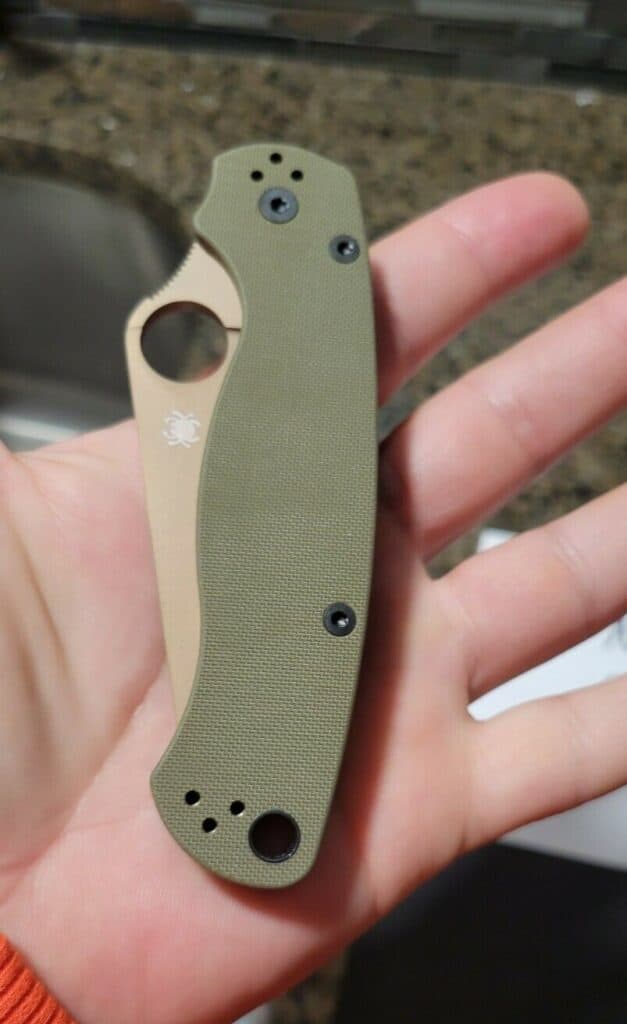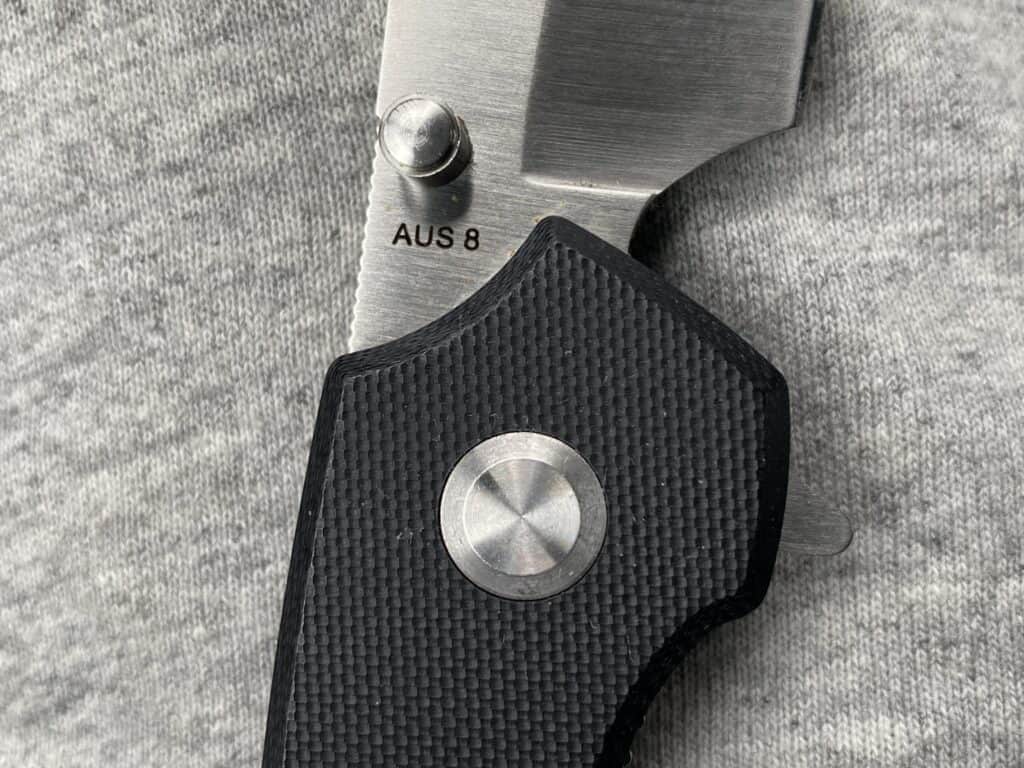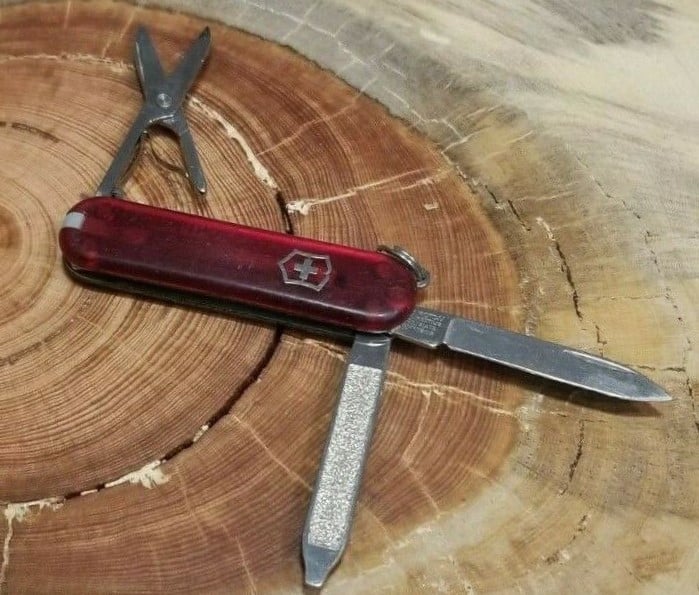Last updated on February 3rd, 2023 at 03:49 pm
As an Amazon Associate I earn from qualifying purchases.
In a perfect world, the main difference between a good knife and a bad knife would simply be the cost.
Pay more, and get a better knife.
However, that’s not even remotely true. There are very good knives available at bargain prices and knives that border on unusable but will set you back an entire paycheck.
Not the mention that there are times when you’ll have to evaluate a knife independent of the price. If you are buying a used knife, handling a friend’s, etc. how are you going to make a judgment of quality?
Well, luckily there are a few dependable ways to tell a good knife from a bad knife.
A good knife will have an ergonomic design that fits well in your hand, quality steel materials, an excellent pivot design, and overall build quality. Bad knives often feel loose in the hand, lose their edge faster, and aren’t nearly as durable as their high-quality counterparts.
Now, while this is mainly focused on pocket knives or daily carry knives, nearly all of the principles will also apply to chef knives or other fixed blade knives.
5 Ways That a Good Knife Differs From a Bad Knife
Before we get any further into it, I’ll give you a warning that it is almost impossible to figure out what makes a good knife just by holding it or looking at it (or worse yet, looking at pictures).
The real test of whether a knife is “good or bad” is how well it will do the job you are going to use it for and how durable it will be. However, these indicators are fairly reasonable general guidelines on what makes a quality knife.
1. Efficient/Ergonomic Design
There is a significant difference between a knife being good in the eyes of a forum of knife collectors and a knife being good for you to use on a daily basis.

How a knife feels in your hand will be different for you than for everyone else and there is no real way for someone to advise you on it.
I carry a Spyderco Paramilitary every day, not because it’s the most practical knife, but because it feels great in my hand and it cuts well.
In the words of Marie Kondo, it’s “sparks joy” for me every time I get to use it.
So choose a knife that feels good in your hand and is designed so that you can use it easily and safely.
You may also want to consider the method of opening, type, and location of the lock, etc. to figure out if it will work well for you. However, it may take a couple of weeks of daily carry before you can ultimately make the call.
2. Type of Steel/Materials
One of the most telling methods of discerning the quality of a knife is the type of steel used in the blade.
The type of steel used will determine things like edge retention, durability, corrosion resistance, ease of sharpening, etc.
Most cheap knives fall into the “bad” category when it comes to blade steel as they use cheap steel that is unlikely to hold an edge for long. In fact, poor heat treating can often result in cheap blades breaking tips due to poor heat treating.
Bohler M390 is commonly considered to be the best premium knife steel but you’ll definitely pay for what you’re getting.
Some high-quality budget steels include AUS 8, D2, and 1095.

If the knife you’re buying doesn’t have a steel marking on the blade, you can safely assume it’s not worth mentioning.
3. Pivot Design
The design and build of the pivot (if the knife is a folder) are incredibly important. It affects both the daily function/feel of the knife as well as its longevity.
As you might expect, a quality knife will have the most expensive pivot option: typically bearings. Washers, the budget option, come in varying materials and designs.
Whichever type of pivot your knife has, there are good and examples of everyone. Be sure that the knife you’re looking at is smooth and, if it’s used, that it is cleaned and oiled.
4. Overall Build Quality
Unfortunately, there isn’t an easily quantifiable test for “the feel of quality”.
However, if you know, you know. Handle many quality knives and you’ll develop an innate ability to tell good knives from bad. Or at least you’ll refine your own preferences which are just as important.
Many people tend to associate heft with quality but with scale materials such as carbon fiber and Zytel the weight and hand feel tests go out the window.
However, there are a couple of signs of build quality that you can recognize:
- Blade Centering. When a knife is closed, the blade should be centered directly in its space. If the knife is crappy (or loose) the blade will often drift off to one side and the rubbing can make it difficult to open and close.
- Lockup. The lockup of a good knife should be snappy and solid. If you open a knife and the lockup with indistinct or the blade wiggles, it’s likely you have yourself a bad knife.
- Smoothness. Is the knife easy to open? Does it grind or catch? Nice knives that are cleaned and oiled are buttery smooth and glide open/closed
5. It’s From A Real Company
If you need a real assurance of quality, buy your knife from a reputable company.
While there are exceptions, it’s pretty unusual for a knife company that no one has ever heard of to produce a high-quality knife en-masse to be sold in a big box store.
Buying from an established knife company gives you access to customer service, sharpening from the company, replacement parts (scales, clips, etc.), and probably even a guarantee.
One of the best ways to make sure you’re getting a good knife that is authentic is to visit a dedicated knife shop (either in person or online). If a knife is there, it’s reasonable to assume that the brand is reputable to some extent.
And it never hurts to ask for help or recommendations!
Do You Need To Spend A Lot Of Money For A “Good” Knife?
Despite what knife-snobs would have you think, the purpose of a knife is to cut stuff, and pretty much any knife will do that.
Finding a knife that you like and then caring for it well (keeping it oiled and sharp) will make a much bigger difference than the “good vs bad knife” debate that many people are embroiled in.

Despite owning several (very) expensive knives now my favorite memories are with my first knife, a Victorinox Classic SD that you can get for less than $10.
Conclusion
At the end of the day, there definitely is something to be said about saving up for a high-quality knife. It will last longer, hold an edge better, and be more enjoyable for the life of the knife.
However, the knife that you have with you is far better than the expensive knife still in its box on your nightstand. So find a knife you love and call it “good enough”.
Do Sheepsfoot Blades Have A Purpose? (Cuz They’re Ugly…)
Spetsnaz Machetes – Blades Of The Russian Special Forces
What Is The Actual Purpose Of A Spear Point Knife Blade?
CRKT CEO Review – Coolest, Most Worthless Knife Ever?
How Sharp Is A Scalpel? (Is It Sharper Than A Razor?)
Can You Shave With A Knife? (Yes, Here’s How)
As an Amazon Associate I earn from qualifying purchases.







